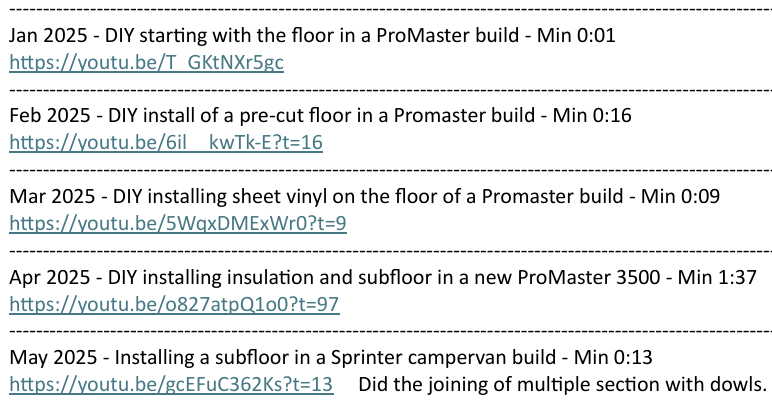Almost RV Perfect
Surface - Floor | $5.99 | eBook | 67 User Generated Video Clips | Click and Watch
Surface - Floor | $5.99 | eBook | 67 User Generated Video Clips | Click and Watch
Couldn't load pickup availability
eBook immediate DOWNLOAD - A year's research about what DIY builders are installing in their campervan build.
Research: What we found - There are several options when installing a floor in the campervan. Some builders decide not to insulate the floor. The floor is always going to be cold, no matter how well they insulate. Others think it is necessary to insulate the floor with wood batons strategically placed as shelf and cabinet supports. Before the batons are permanently attached to the van floor, custom-cut foam sheets with a reflective foil are dry-fitted in place. Once the dry fitting is completed, the batons are clued to the van's metal floor. The last step is to apply reflective foil tape over the wood baton to complete the vapor barrier over the insulation. The last step is to install plywood sheeting as a sub-floor.
Note: A one-inch thick wood baton has an R value of 1.15, allowing heat and cold to transfer through the floor. Essentially, this method frames the polyiso, which has an R value of 7, with borders of R 1.15. This is a considerable amount of work for a minimal insulation value. You might want to consider gluing down full polyiso sheets with an R value of 7, then covering the polyiso with plywood sheets, an R value of 2, giving a total R value of 9 across the whole sub-floor.
AI Overview - Yes, you should insulate the floor of a campervan to prevent heat loss from the road, seal out drafts, and improve comfort in both cold and hot weather. While heat rises, the floor is where you'll feel the cold, and it's also a key entry point for heat and noise from the road below.
Share










